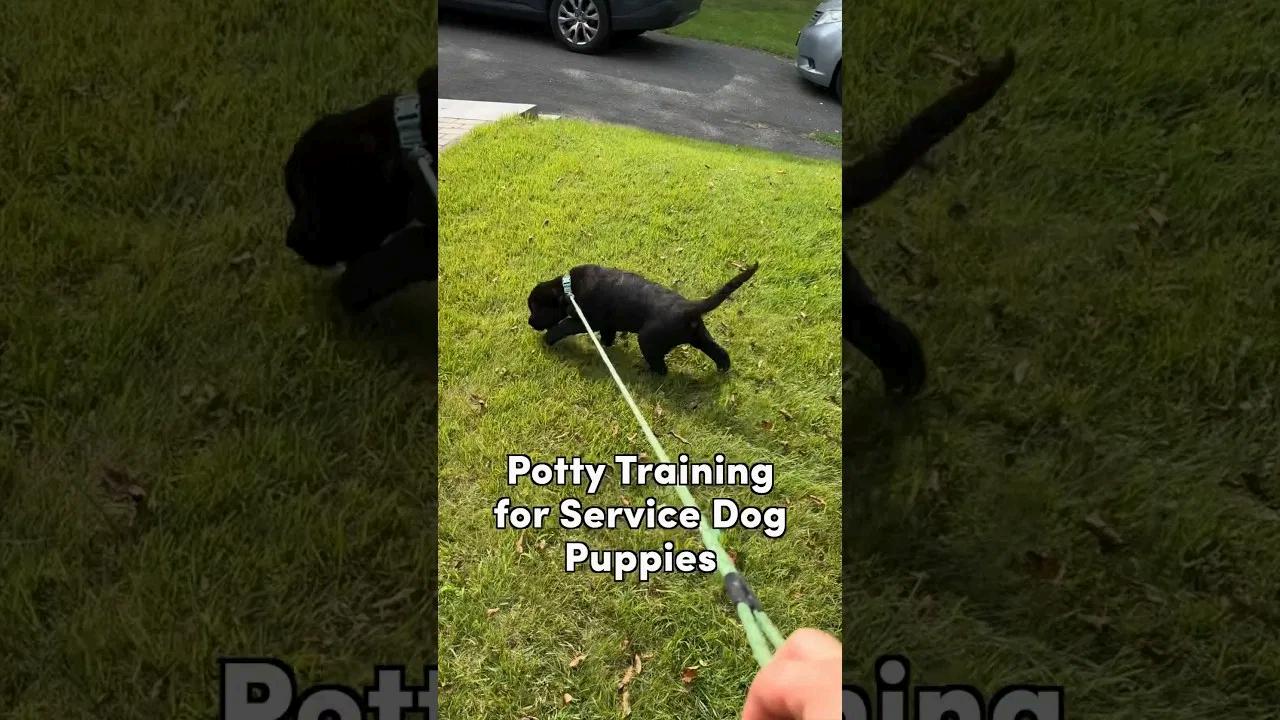"Go
Time!"
Mastering Potty Training for Your Service Dog
Why Potty Training Matters for Service Dogs
Public Access Requirements: Service dogs must not eliminate inappropriately in public spaces - a critical qualification for certification.
Professional Image: A well-trained service dog reflects the handler's commitment to proper training and public etiquette.
Health and Comfort: Reliable potty habits ensure your dog's comfort during extended working periods.
Handler Confidence: Knowing your dog can reliably eliminate on cue reduces stress in unfamiliar environments.

The Foundation: Routine and Reinforcement
Consistent Schedule: Take your service dog out at the same times every day, especially after meals, naps, and play sessions.
Positive Reinforcement: Immediately reward successful elimination with high-value treats and enthusiastic praise.
Predictable Routine: Service dogs thrive on structure - a consistent routine builds reliable potty habits.
Pro Tip: Keep a potty log during training to identify patterns and adjust your schedule accordingly.

The Power of a Potty Cue
1 Choose a Distinct Cue: Select a unique phrase like "Go Potty" or "Hurry Up" that you'll use consistently.
2 Introduce During Action: Say your chosen cue while your dog is in the act of eliminating.
3 Reward Immediately: Praise and treat the moment they finish to create a positive association.
4 Test the Cue: After consistent practice, try using the cue before they start eliminating. "A reliable potty cue is perhaps the most important command for a service dog in public access situations."

Public Access and New Environments
Challenge: Unfamiliar Surfaces
Solution: Gradually expose your dog to different surfaces (concrete, gravel, grass) during training.
Challenge: Distracting Environments
Solution: Practice the potty cue in progressively more distracting environments.
Challenge: Limited Relief Areas
Solution: Train with portable potty systems to create familiar elimination spots anywhere.
Challenge: Time Constraints
Solution: Teach your dog to eliminate quickly on cue when needed.

Problem Solving and Accident Management
✓ DO
Clean accidents thoroughly with enzymatic cleaners
Remain calm and redirect to proper area
Increase supervision and potty break frequency
Review and adjust your training approach
Recognizing Potty Signals:
Sniffing and circling intensely
Whining or pacing near exits
Suddenly leaving the room or activity
× DON'T
Punish or scold after accidents
Rub your dog's nose in the mess
Ignore repeated accidents in the same area
Assume your dog "knows better"

Advanced Techniques for Service Dogs
⭐ Surface Generalization
Training your dog to eliminate on multiple surface types, essential for service work in varied environments.
⭐ Extended Duration Holding
Gradually increasing the time between potty breaks to build bladder control for long working periods.
⭐ Emergency Elimination Cues
Teaching separate cues for urination and defecation for precise control in time-sensitive situations.
⭐ Designated Area Training
Training your dog to seek out and use specific types of areas for elimination in unfamiliar locations.

Note: These advanced techniques are covered in detail in the complete guide "Training Your Companion Dog for Service."
3-Step Training Process
Establish a Predictable Schedule
Create a consistent routine with regular potty breaks, especially after meals, naps, and play. Track patterns to optimize timing.
Introduce your chosen cue word during elimination, reward immediately, and gradually transition to using the cue before the action begins.
Generalize to All Environments
Practice in progressively more challenging locations, from your yard to public spaces, ensuring reliability in all service work settings.


